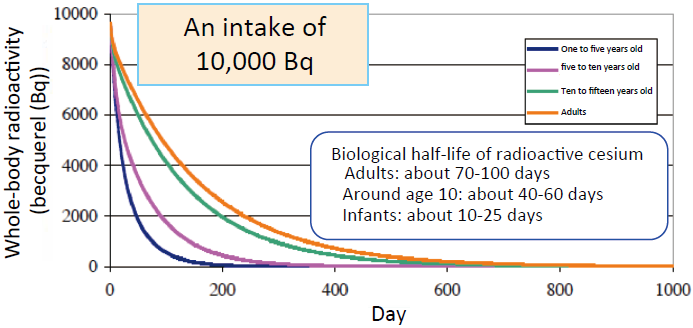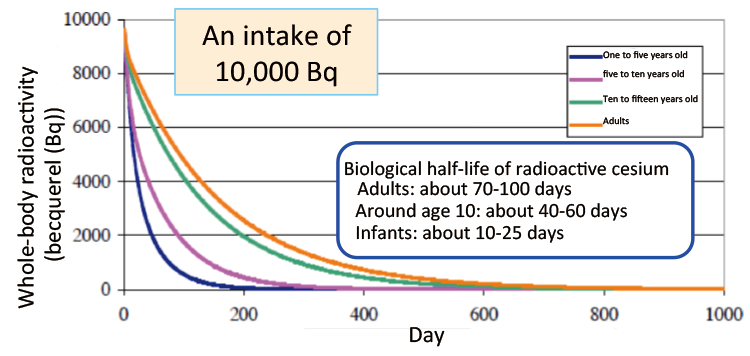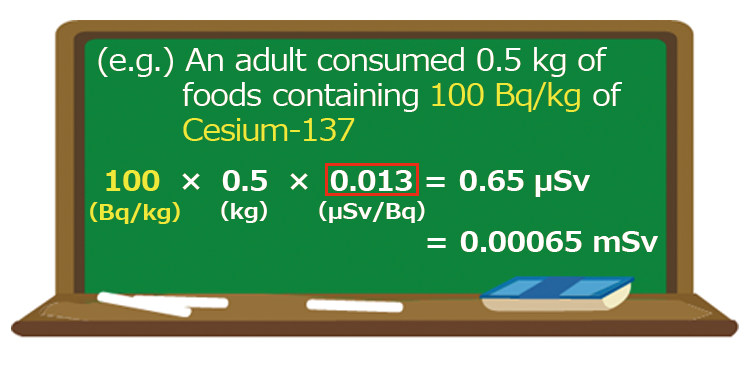(v) Exposure dose from food
Internal exposure dose is calculated based on intake volume of foods containing radioactive materials.
The Idea of Internal Exposure
Radioactive materials remain in the body for a certain period of time after being taken into the body. In the meantime, the body will be continuously exposed to radiation. Thus, the total amount of radiation that a person will be exposed to into the future is calculated as dose due to internal exposure based on a single intake of radioactive materials.
Any radioactive materials taken into the body will decrease over time. For adults, the time required for radioactive cesium that enters the body to reduce to half is said to be about 70 -100 days.


- Source:
- Modified from a material released for the Japan Society of Radiation Safety Management Symposium in Miyazaki (June 29, 2012)
For more information about the idea of internal exposure, see pages 56 and 62 of Vol. 1, FY2022 edition.
Exposure Doses from Foods (Example of Calculation)
For example, the dose that an adult who consumed foods containing Cesium-137 will receive is calculated here.


- Source:
- ICRP Publication 119, Compendium of Dose Coefficients based on ICRP Publication 60, 2012, International Commission on Radiological Protection (ICRP)
The 0.013 in the red box is the coefficient for converting from Bq to Sv defined by the International Commission on Radiological Protection (ICRP). When calculating internal exposure dose, consider the committed effective dose. Committed effective dose coefficients are defined in detail for each type of radioactive material, each intake route (inhalation or ingestion), and each age group. Based on market basket surveys, annual radiation doses received from radioactive cesium in foods were estimated to be 0.0005 to 0.0011 mSv, 1% or lower of the annual permissible dose of 1 mSv/y, based on which the standard limits were established. Thus, annual radiation doses were confirmed to be extremely small.
For more information about these calculations, see page 58 of Vol. 1, FY2022 edition.


